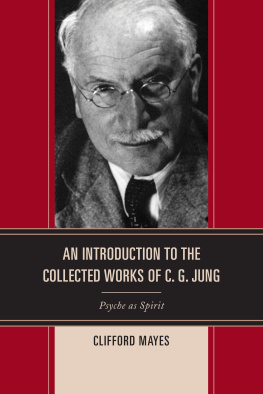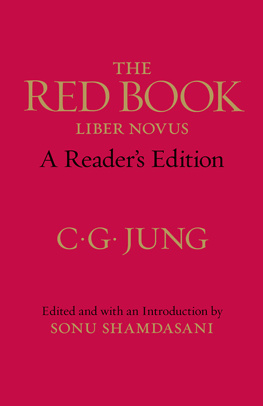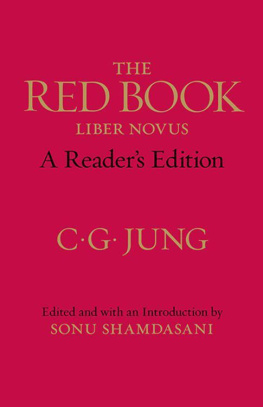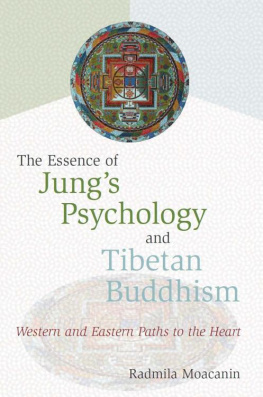B O L L I N G E N S E R I E S X X

THE COLLECTED WORKS
OF
C. G. JUNG
VOLUME 7
EDITORS
SIR HERBERT READ
MICHAEL FORDHAM, M.D., M.R.C.P.
GERHARD ADLER, PH.D.
WILLIAM MCGUIRE, executive editor
COPYRIGHT 1953 BY BOLLINGEN FOUNDATION INC., NEW YORK, N.Y. NEW MATERIAL COPYRIGHT 1966 BY BOLLINGEN FOUNDATION PUBLISHED BY PRINCETON UNIVERSITY PRESS, PRINCETON, N.J. ALL RIGHTS RESERVED
Second edition, revised and augmented, 1966
First Princeton / Bollingen Paperback Printing, 1972
THE HARDCOVER EDITION IS PUBLISHED IN THE UNITED STATES OF AMERICA BY PRINCETON UNIVERSITY PRESS AND IN ENGLAND BY ROUTLEDGE AND KEGAN PAUL, LTD. IN THE AMERICAN EDITION, ALL THE VOLUMES COMPRISING THE COLLECTED WORKS CONSTITUTE NUMBER XX IN BOLLINGEN SERIES. THE PRESENT VOLUME IS NUMBER 7 OF THE COLLECTED WORKS AND WAS THE SECOND TO APPEAR.
The two principal works in this volume are translated from ber die Psychologie des Unbewussten (1943) and Die Beziehungen zwischen dem Ich und dem Unbewussten (1928; 2nd edn., 1935), published by Rascher Verlag, Zurich.
The first edition was published in a Meridian Books paperback edition (New York, 1956)
LIBRARY OF CONGRESS CATALOGUE CARD NUMBER: 75156
ISBN 0-691-01782-4 (paperback edn.)
ISBN 0-691-09776-3 (hardcover edn.)
MANUFACTURED IN THE U.S.A.
TWO ESSAYS IN
ANALYTICAL
PSYCHOLOGY
C. G. JUNG
SECOND EDITION
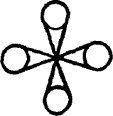
TRANSLATED BY R. F. C. HULL
B O L L I N G E N S E R I E S X X


EDITORIAL NOTE TO THE FIRST EDITION
The Structure of the Unconscious and New Paths in Psychology together marked a turning point in the history of analytical psychology, for they revealed the foundations upon which the greater part of Professor Jungs later work was built.
Both these essays were considerably revised and expanded for the successive editions mentioned in the Prefaces to the present volume. These Prefaces indicate the extent of the changes which were made on each occasion. As C. F. and H. G. Baynes say in the introduction to their English translation of an intermediate version, where the title Two Essays in Analytical Psychology was used for the first time: Of the first essay only the framework of its earlier form can be recognized, and so much new material has been added to the second essay that both works start afresh, so to speak, full of the amazing vitality of Jungs mind. The essays are indeed remarkable for the number of revisions to which they have been subjected, each reflecting a new development of thought based upon increasingly fruitful researches into the unconscious.
However interesting the intermediate versions may be in themselves, the original drafts of these essays are undoubtedly far more significant to the student of analytical psychology. They contain the first tentative formulations of Jungs concept of archetypes and the collective unconscious, as well as his germinating theory of types. This theory was put forward, partially at least, as an attempt to explain the conflicts within the psychoanalytic school, of which he had been so prominent a member and from which he had so recently seceded.
With these considerations in mind the Editors decided to include the original drafts of these two essays in separate Appendices. It was felt that their historical interest fully justified the duplication of reading matter which comparison of the texts would involve.
Acknowledgment is gratefully made of the kindness of Faber and Faber, Ltd., London, and the Oxford University Press, New York, in permitting quotation from the Louis MacNeice translation of Goethes Faust.
EDITORIAL NOTE TO THE SECOND EDITION
When the stock of the first edition of this volume was exhausted, twelve years after its first publication, the publishers undertook a complete resetting of type rather than a corrected reprint, as the result of research among Professor Jungs posthumous papers.
The text of Appendix 1, New Paths in Psychology, was found to be an incomplete version of what the author published in 1912, and it was decided to publish the complete version, with the earliest deletions indicated. For Appendix 2, The Structure of the Unconscious, it had been necessary in the first edition to retranslate a French translation in the absence of the original German. Subsequently the authors holograph manuscript was discovered in his archives, and this furthermore contained several unpublished passages and variants of historical interest.
Both appendices have accordingly been re-edited and largely retranslated to take the new findings into account. (For details, see the editorial note at the beginning of each appendix.) Similar though not identical presentations were published in Volume 7 of the Gesammelte Werke, i.e., the Swiss edition, in 1964. Also on the model of the Swiss edition, the complete texts of the various forewords have been added. The title of the first essay has been modified to On the Psychology of the Unconscious.
The texts of the two main essays have also been revised, for consistency, the reference apparatus has been brought up to date, a bibliography has been added, and a new index has been supplied.
TABLE OF CONTENTS
I
ON THE PSYCHOLOGY OF THE UNCONSCIOUS
II
THE RELATIONS BETWEEN THE EGO AND THE UNCONSCIOUS
Part One
THE EFFECTS OF THE UNCONSCIOUS
UPON CONSCIOUSNESS
Part Two
INDIVIDUATION
I
ON THE PSYCHOLOGY OF THE UNCONSCIOUS
PREFACE TO THE FIRST EDITION (1917)
This essay The present work thus reproduces that earlier essay, though in altered and enlarged form. In my earlier paper I confined myself to the exposition of one essential aspect of the psychological views inaugurated by Freud. The manifold and important changes which recent years have brought in the psychology of the unconscious have compelled me to broaden considerably the framework of my earlier paper. On the one hand a number of passages on Freud were shortened, while on the other hand, Adlers psychology was taken into account; and, so far as was possible within the limits of this essay, a general survey of my own views was given.
I must warn the reader at the outset that he will be dealing with a study which, on account of its rather complicated subject-matter, will make considerable demands on his patience and attention. Nor can I associate this work with the idea that it is in any sense conclusive or adequately convincing. This requirement could be met only by comprehensive scientific treatises on each separate problem touched upon in the essay. The reader who wishes to probe more deeply into the questions at issue must therefore be referred to the specialist literature. My intention is simply to give a broad survey of the most recent views on the nature and psychology of the unconscious. I regard the problem of the unconscious as so important and so topical that it would, in my opinion, be a great loss if this question, which touches each one of us so closely, were to disappear from the orbit of the educated lay public by being banished to some inaccessible technical journal, there to lead a shadowy paper-existence on the shelves of libraries.
Next page

